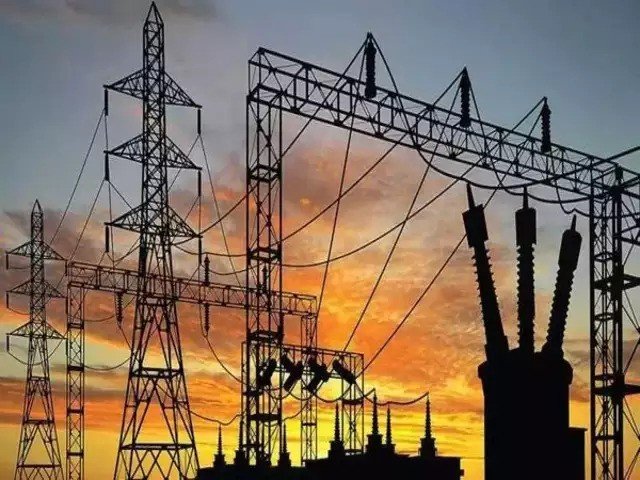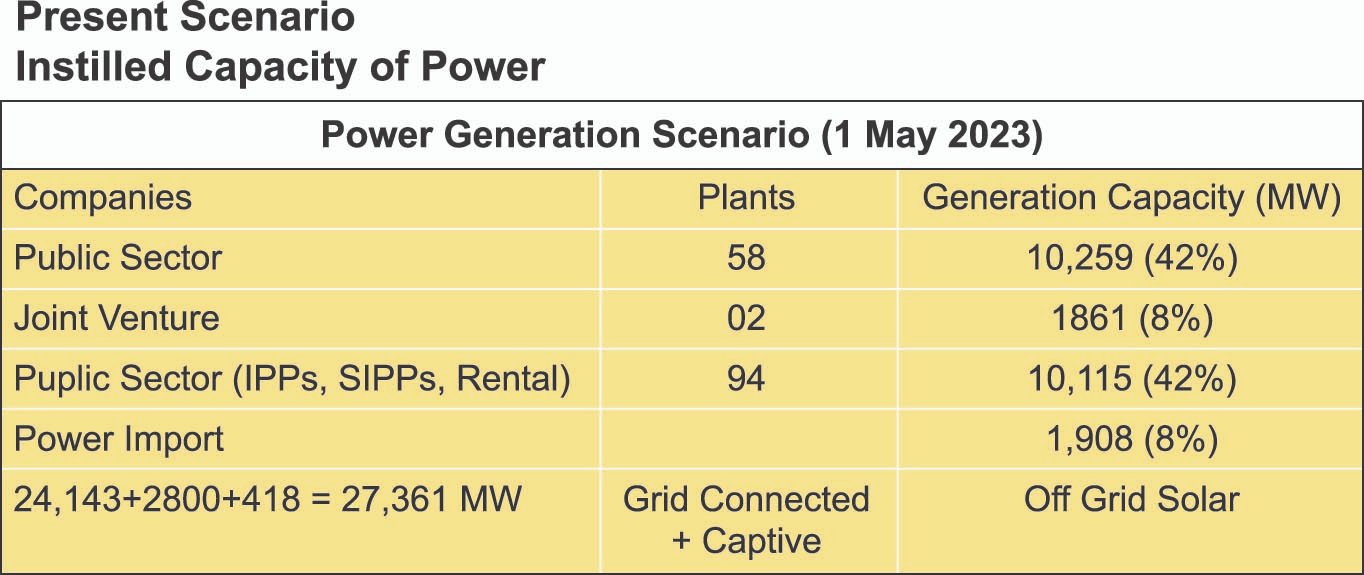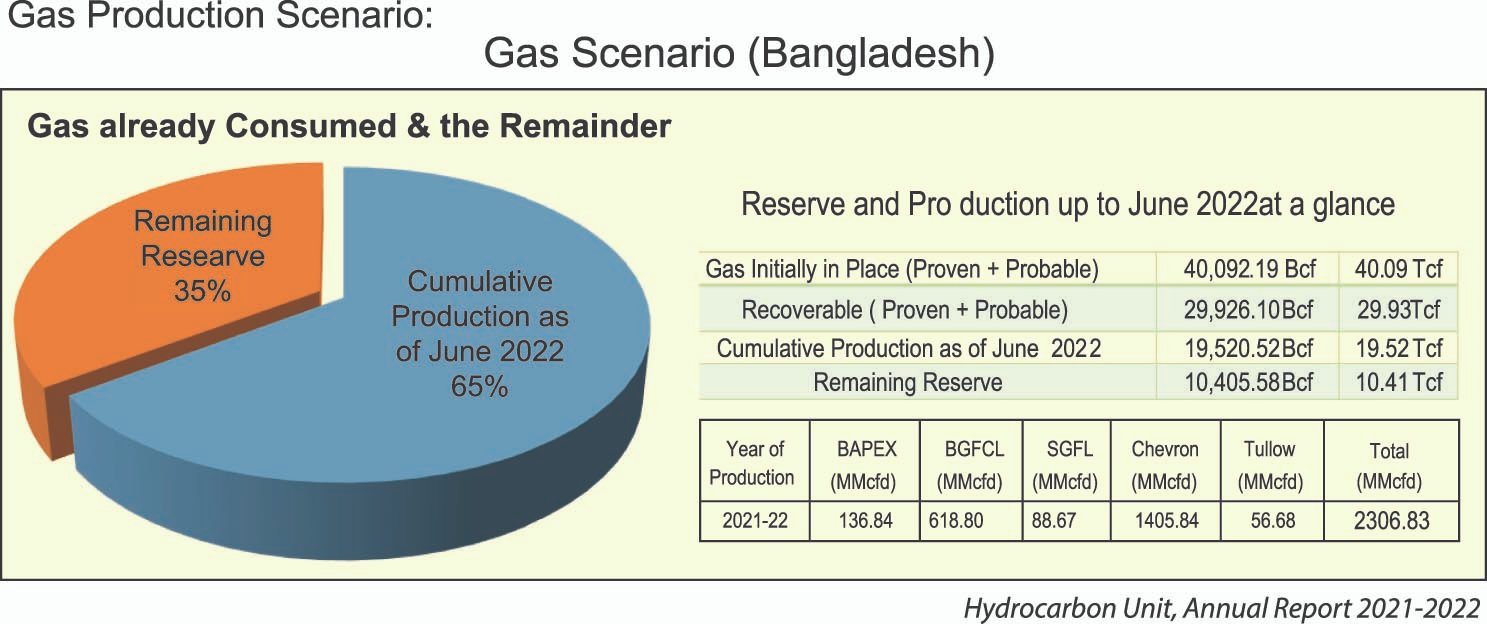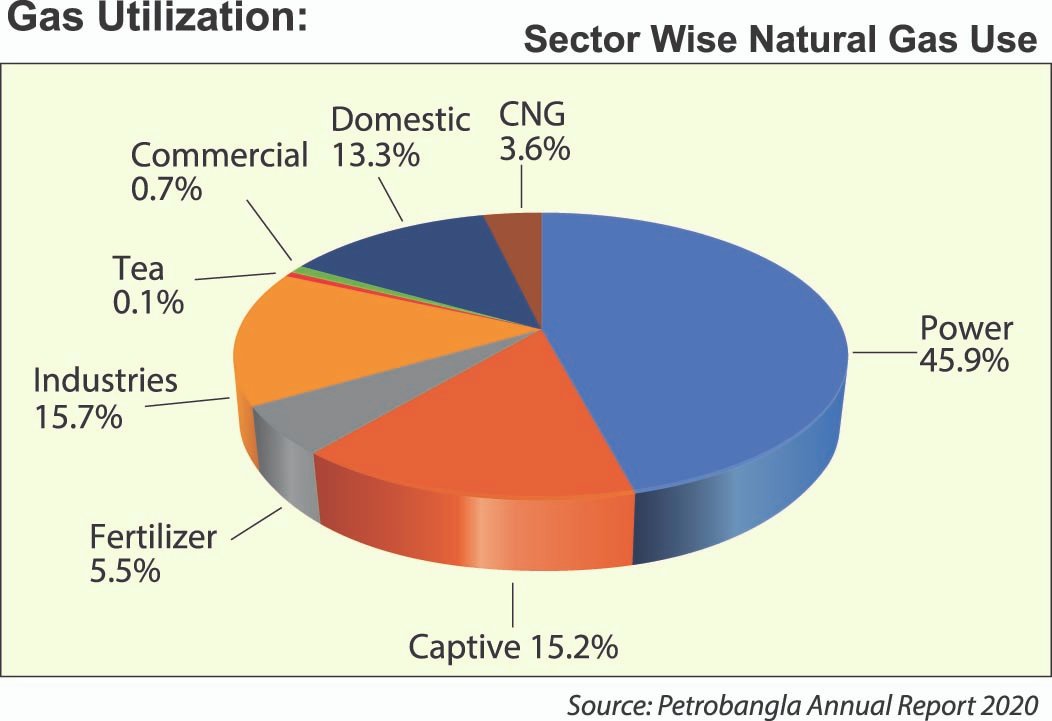
Ensuring a sustainable supply of energy will be the major challenge that the upcoming government will have to encounter in 2024. The present government over the past 15 years in state power in three terms achieved enviable milestones of increasing power generation capacity more than five times to what it inherited in 2008. The total installed generation capacity including import from India, off-grid captive generation, and off-grid solar is now 27,361 MW. The highest generation was 15,683 MW recorded on April 15, 2023. The chronic crisis of fuel supply, including domestic gas (rapid depletion of proven gas reserve and not enough replenishment through exploration), absence of a political decision to mine own coal resource, and dollar crisis constraining import restricted the capacity of BPDB in meeting the demand. The winter will be managed somehow, but the crisis will start deepening in February 2024, followed by Ramadan and Summer. The growth and development of the power and energy sectors unfortunately did not complement each other. Even the development of power generation capacity did not match transmission, distribution, and as well as fuel supply. There exists a huge reserve margin but not enough spinning reserve. Gas crisis and inability to pay for fuel purchases (coal, LNG, and liquid fuel) constrains BPDB even generating consistently 14,000-15,000 MW. There is no quick fix. Something exceptional needs to be done to manage the emerging crisis.
The peak demand for power in 2024 may exceed 16,000 MW. In the present situation power supply chain may struggle to generate consistently 14,000-15,000 MW. BPDB, Petrobangla, and BPC are on the verge of going bankrupt with huge outstanding payments of the creditors overdue. We are not sure how much this can be mitigated through adjusting the power tariff, and price of gas and liquid fuel. Smart demand side management, elimination of theft and pilferage, and major actions ensuring efficient use of power and energy are the only options. Petrobangla cannot increase gas supply from its fields, neither can increase LNG supply before 2026. Maintaining the present level of gas supply in 2024 will be a major challenge as major gas-producing fields in Bibiyana, Jalalabad, and Titas have shown ominous signs of depletion. Water drive wells deplete very fast at the later stage of their production life. The 3rd FSRU that Summit Energy will build, will not come into operation before 2026. We are unsure about the success of RLNG supply from deepwater LNG facility that may be set up by US Company Excelerate. All additional LNG supply contracted with Qatar and Oman as well as Excelerate and Summit will not happen before 2026. Consequently, in 2024 and 2025 Bangladesh must maintain intensively monitor austerity in use and manage the energy sector smartly and efficiently. Rooftop solar must be given priority providing them with fiscal and financial incentives for making some contributions. But we must bear in mind unless storage facilities are included the interrupted supply may not contribute much. Moreover, the integration of solar to the national grid will require major work. Rooppor nuclear power plant may not start operation because of delays in works of power transmission facilities.

Fuel Mix for Power Generation (Installed Capacity)
Natural gas (domestic and imported LNG) remains the major contributor to the fuel mix. But for continued depletion of production from own fields and limited LNG import a large capacity of gas-based power generation is forced to remain idle. The deficit is met by running the liquid fuel-based plants meant for peak shaving being operated longer. But there again, a crisis has emerged for the dollar crisis in importing liquid fuel. BPDB also owes huge payments to IPPs. This situation will not change much in 2024 or 2025.

Gas Production Scenario:
The above information evidenced that 65% of the proven reserve depleted by the end of 2022. Adding another 5% used in 2023 it becomes 70%. All the under-production gas fields are depleting fast. The real concern is the depletion of Bibiyana and Jalalabad. From the experience with Bakhrabad and Shangu, we are concerned that in 2024 Bibiyana which contributes about 40% of the total production may deplete abruptly. Bangladesh has not taken any contingency measures for that.

Gas Utilization:

!5.20 + 13.30 = 28.50 % of the total gas produced is used in captive power generation by industries and domestic consumers for cooking. The % used by domestic consumers may be higher as a large portion of domestic users are using gas without a meter and there exists innumerable unauthorized connections. Industries were allowed to set up gas-based power units for a reliable supply of quality power by power distribution utilities. The situation may have changed a bit in DPDC, and DESCO franchise areas but the quality of power and reliable supplies are not yet available under BREB and other distribution utility franchises. 15.2 % of gas could be saved and diverted to industries if a reliable supply of quality to industries could be ensured. Another area to ponder is domestic use. Gas distribution companies are struggling to eliminate theft and pilferage. Why not the government plan to phase out domestic use of gas and replace it with alternate uses like LPG and electric cookers? 90% of the population can not use pipeline gas in any case. It goes against the equity principle that the constitution ensured.
Government Actions
An under-implementation project of Petrobangla and BAPEX is aimed to increase gas supply by 618 MMCFD by 2025. We consider it highly optimistic. Even then this must be expedited. Even if 300 MMCFD new gas can be added by 2025 that will assist at least maintaining the local production at the present level. The government has approved Excelerate’s proposal for increasing the capacity of its FSRU at Maheshkhali. Summit Energy is also going to set up the 3rd FSRU at Maheshkhali. The contract has been signed with Qatar and Oman as well as with Summit and Excelerate to supply additional LNG from 2026. None of these will assist Bangladesh in encountering the emerging crisis of 2024. The government is working on two proposals for importing gas by pipeline from Indian territory. It will also not happen before 2026. The government has embarked on an initiative for transporting a part of gas from Bhola converting it to CNG. 5 -25 MMCFD will not be much considering the huge deficit. The government should rather expedite the construction of a pipeline to connect Bhola gas fields with the National Gas grid. Gas supply security is a must for the smooth operation of industries, especially export-oriented industries.
Conclusion
In the present situation, the government must work out a detailed austerity plan for power and energy use from February to October 2024 and beyond. An intensive drive must be launched to eliminate theft and pilferage. Plants and facilities that are using gas and energy efficiently must be given priority. All must behave responsibly and exercise caution against ineffective use of energy and power.
Analysis as PDF/userfiles/Analysis.pdf



